You may invest a lot of effort into bringing users to your website — set up contextual advertising, create and promote useful content, run social media campaigns, — yet there is no point in all these initiatives if your visitors don’t turn into customers or, in other words, don’t convert.
So, in this article, we’ll talk about sales conversion rate; in particular, we’ll define this notion, explain how to calculate conversion rate at each step of the customer journey, and offer some ways to improve your sales conversion rate with email marketing.
What is sales conversion rate?
Sales conversion rate is a metric, usually expressed as a percentage, that shows what part of visitors who interacted with your company or your product made a purchase. For an eCommerce business, the sales conversion rate is a ratio of customers to website visitors. For example, a conversion rate of 2.5% means that 25 out of thousand website visitors made a purchase.
You might have already heard the terms as micro conversions and macro conversions. A purchase is considered to be a macro conversion, while all other actions which lead to this purchase — email subscription or a price list request — are micro conversions.
How to calculate conversion rate and why online store owners need it
Track your metrics for a particular period of time, for instance, a month, and place them in a sales conversion rate formula:
Sales conversion rate = Customers / Visitors x 100
Google Analytics can automatically calculate your sales conversion rate. For that, you should set up eCommerce tracking to your website to collect data.
Two logical questions may arise, Why do other users fail to make a purchase? What can I do to optimize my conversion rate? To answer them both, you need to better understand your customers’ behavior.
Conversion rates at different stages of the sales funnel
A sales funnel demonstrates how many users you lose from their very first visit of your website up to a purchase. In an online store, the sales funnel looks like this: a user visits a website, goes to a cart, opens up a purchase page, and clicks “Pay:”
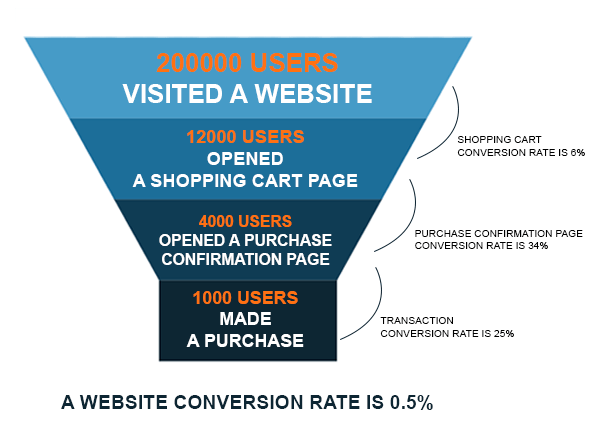 A sales funnel of an online store
A sales funnel of an online store
If you go over each metric at evry step in the sales funnel, you will see what can be improved. For example, if users leave at the purchase confirmation step: set up triggered emails and motivate users to finish up their purchase.
Conversion rate of first-time buyers and repeat customers
First-time visitor conversions show how well you sell in general by bringing value to the audience, answering people’s questions, and helping users to solve their problems.
Repeat customer conversion rate demonstrates how valuable your product was for the buyers and how well your post-purchase strategy works.
Conversion rate of customer acquisition channels
This number shows which marketing channels bring more customers. By analyzing conversion rates from different acquisition channels, you can determine which of them were more or less effective.
How to boost sales conversion rate of an online store using email
Only a part of your website visitors will make a purchase right away. The rest will leave and probably won’t come back. However, if you continue communicating with visitors, try to allay their fears and overcome objections, they may become customers. Email marketing is a channel that is suited perfectly for this task.
Below are a few tips on how to boost your sales conversion rate by getting visitors’ contact details and communicating with them via email.
To build a strong mailing list, add several types of subscription forms to different places of your website. For example, Anthropologie obtains their visitors’ contacts through two different subscription forms.
The first form is a delayed pop-up:
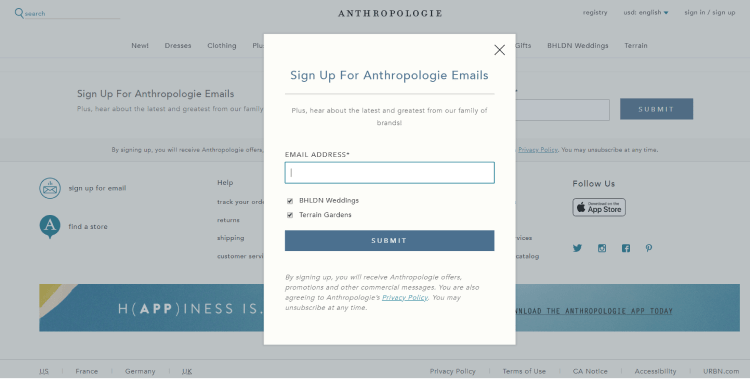 A pop-up subscription form on Anthropologie website
A pop-up subscription form on Anthropologie website
And the second one is an embedded form located in the footer of their website:
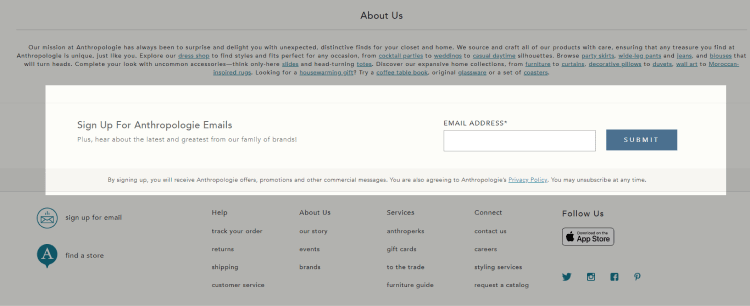 An embedded email subscription form in the footer of Anthropologie website
An embedded email subscription form in the footer of Anthropologie website
Create a lead magnet
To motivate users to sign up and share their contact details, offer a lead magnet. For online store visitors, a lead magnet can be anything from a discount to a free price calculation.
Kate Spade, for example, gives out a 15% discount and free shipping to all new subscribers.
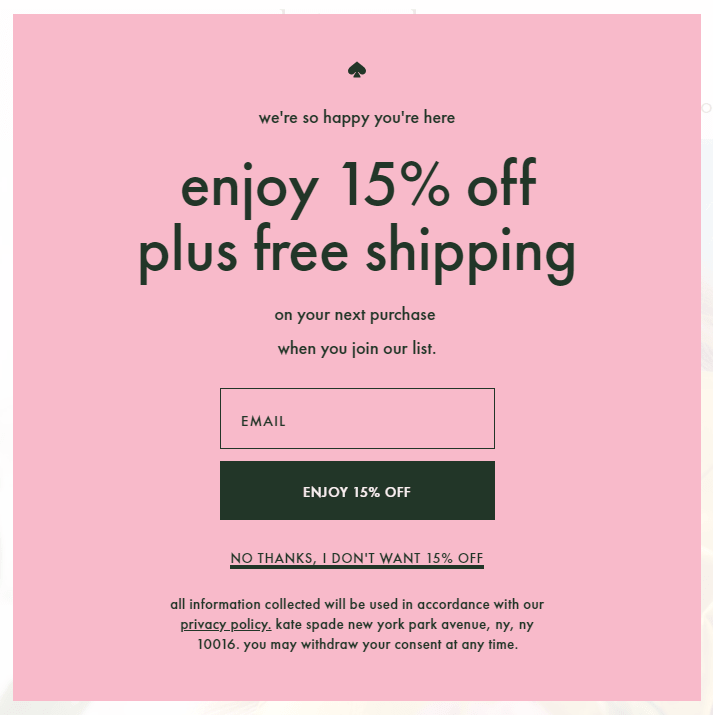 A lead magnet on Kate Spade website
A lead magnet on Kate Spade website
Set up a welcome email
After you’ve motivated a user to sign up, it’s time to use this chance to greet them properly. For that, you should launch an automated welcome email.
A welcome email, or a welcome email series, is usually triggered right after subscription. It’s a perfect time to thank a subscriber for joining your mailing list, offer some discounts, tell more about your company, and provide a short guide on your product — if what you sell is a service or an app, for example.
Take a look at the example of such email from Creative Market.
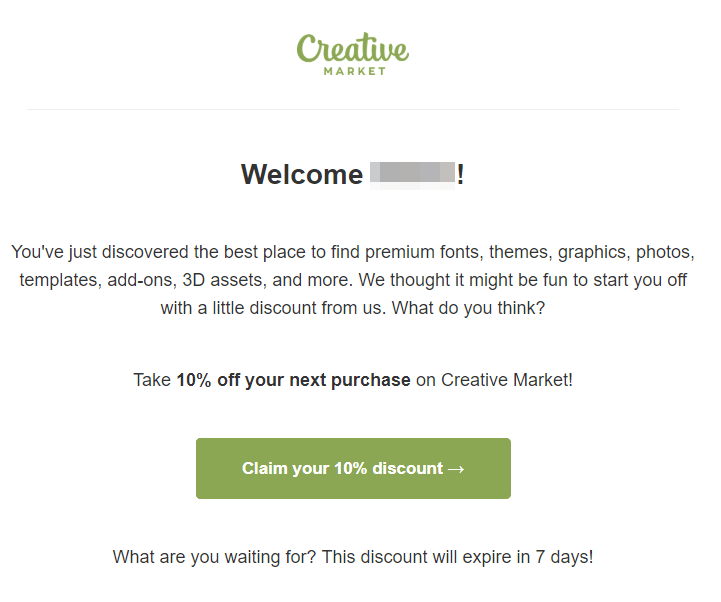 A welcome email from Creative Market
A welcome email from Creative Market
The company thanks subscribers for opting in and offers a 10% discount available only for a week — fear of missing out can be a good motivator to make a purchase.
Segment your audience
Mailing list segmentation is one of the most effective tactics in email marketing. It allows you to prepare personalized emails that bring value to various groups of users. The more relevant emails you send, the more purchases users will make.
You can segment your audience by
- demographic characteristics such as gender, age, occupation, and financial status;
- user activity on your website and in emails;
- purchase history;
- customer lifecycle, and any other characteristics valuable for your business.
Post-purchase reviews, loyalty program registration, and email surveys are just some ways to build customer profiles and segment your email subscribers.
Another opportunity to segment your mailing list is to use a preference center. For example, TheRealReal allow users to specify how often they would like to get emails and which categories of goods they prefer.
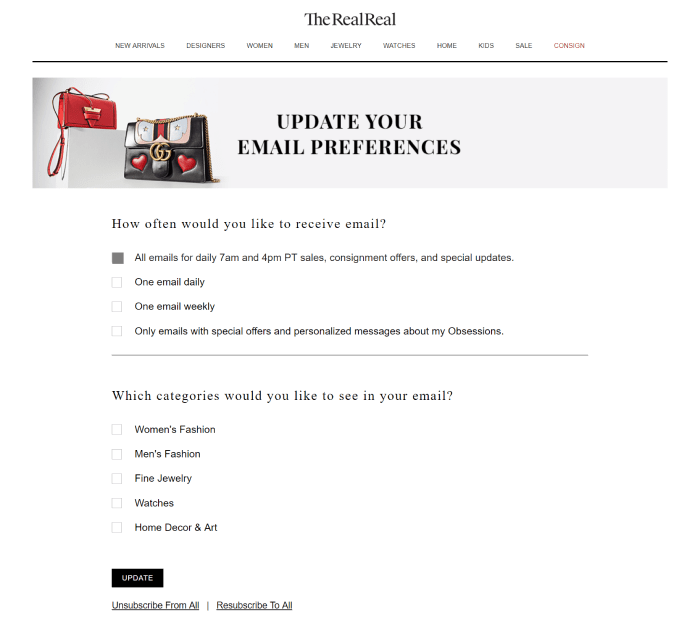 Updating email preferences on TheRealReal website
Updating email preferences on TheRealReal website
Send out re-engagement emails
Monitor user behavior on your website or in emails to immediately react to activity decline. Re-engagement email campaigns help you wake up “sleeping” subscribers. These can be users who joined a mailing list but didn’t purchase anything or those who used to purchase but then stopped. You should remind them about your company and give them a reason to buy.
For instance, Shutterstock send out re-engagement emails with a $10 discount to those who purchased the same image pack before.
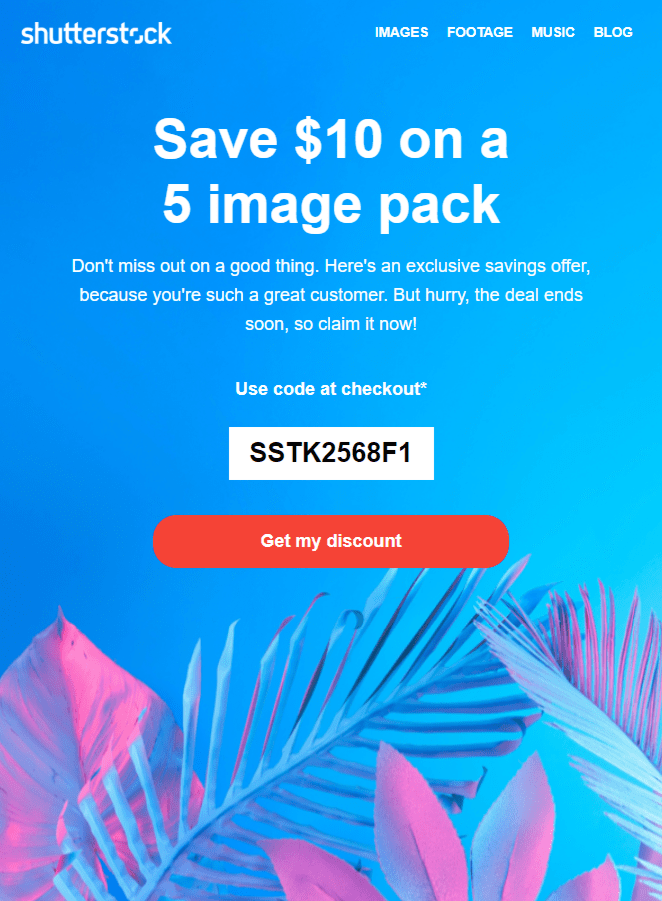 Reactivation email from Shutterstock
Reactivation email from Shutterstock
Set up abandoned cart emails
A user who added an item to a cart and almost finished a purchase may suddenly change their mind — something may have gone wrong, say the price seemed too high, or something distracted them. To bring a potential customer back, send out abandoned cart email.
It can be a single email or a whole series of triggered abandoned cart emails, where you can
- remind visitors about items left in the cart;
- offer assistance;
- give them a coupon or discount as some motivation to make a purchase.
Depositphotos, for instance, reminds users about the files left in their cart and encourage them to complete the purchase. Note that the CTA says “Check my cart,” and this message sounds more inviting than “Proceed with the purchase,” for example.
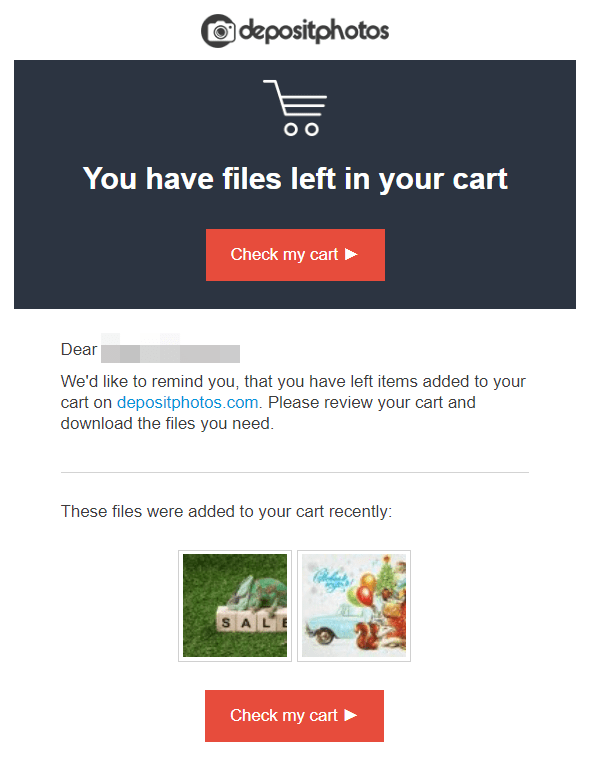 Abandoned cart email from Depositphotos
Abandoned cart email from Depositphotos
Send emails dedicated to a special date
Think of any important dates in the life of a customer that might be a good time to send an email. Congratulate subscribers on their birthday, sign-up anniversary, or any other holidays by offering a gift. Statistics prove that conversion rate of special date emails are almost 5X higher than any other emails.
Take a look at this example from Denny’s. They send out birthday emails with an appetizing photo and invite their subscribers to have a birthday breakfast at their restaurant.
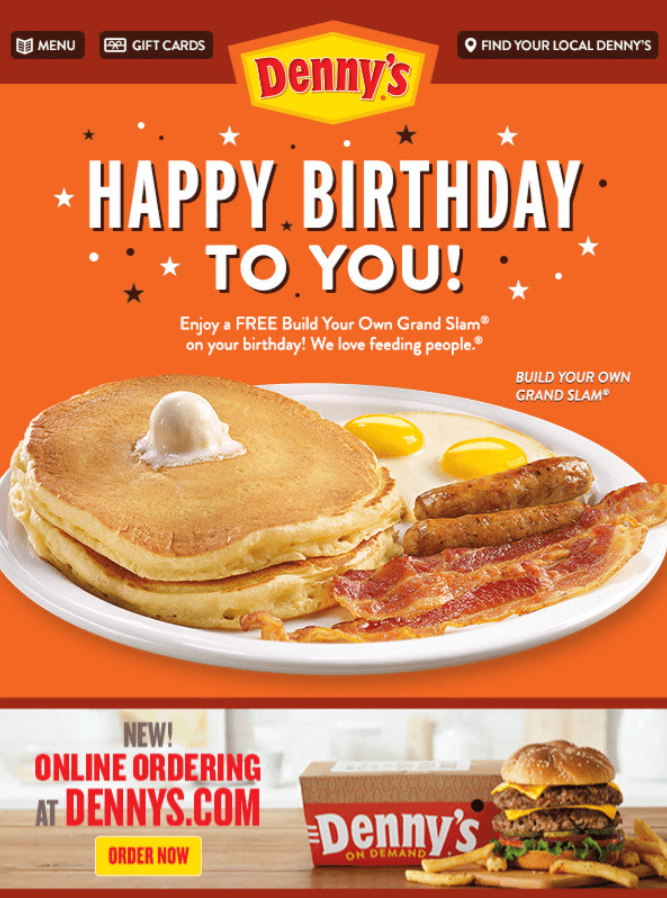 Birthday email from Denny’s
Birthday email from Denny’s
Create a post-purchase email series
Provided a purchase was successful, post-purchase emails can help you maintain a solid reputation and encourage repeat purchases.
In a post-purchase email, you can
Leia, for instance, thanks users for purchasing a book and asks them to rate the product right in the email.
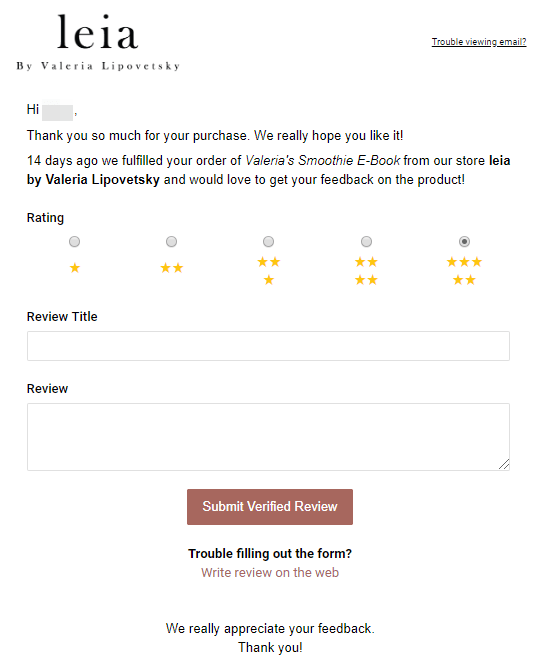 A product review email from Leia
A product review email from Leia
Cross-sell
To encourage users to purchase more, you can offer them some complementary products. For example, if a customer has recently purchased a phone, you can promote a phone case or headphones.
In their email, Dollar Shave Club, not only notify customers about the box shipment, but also shows the items that could fit in the next box.
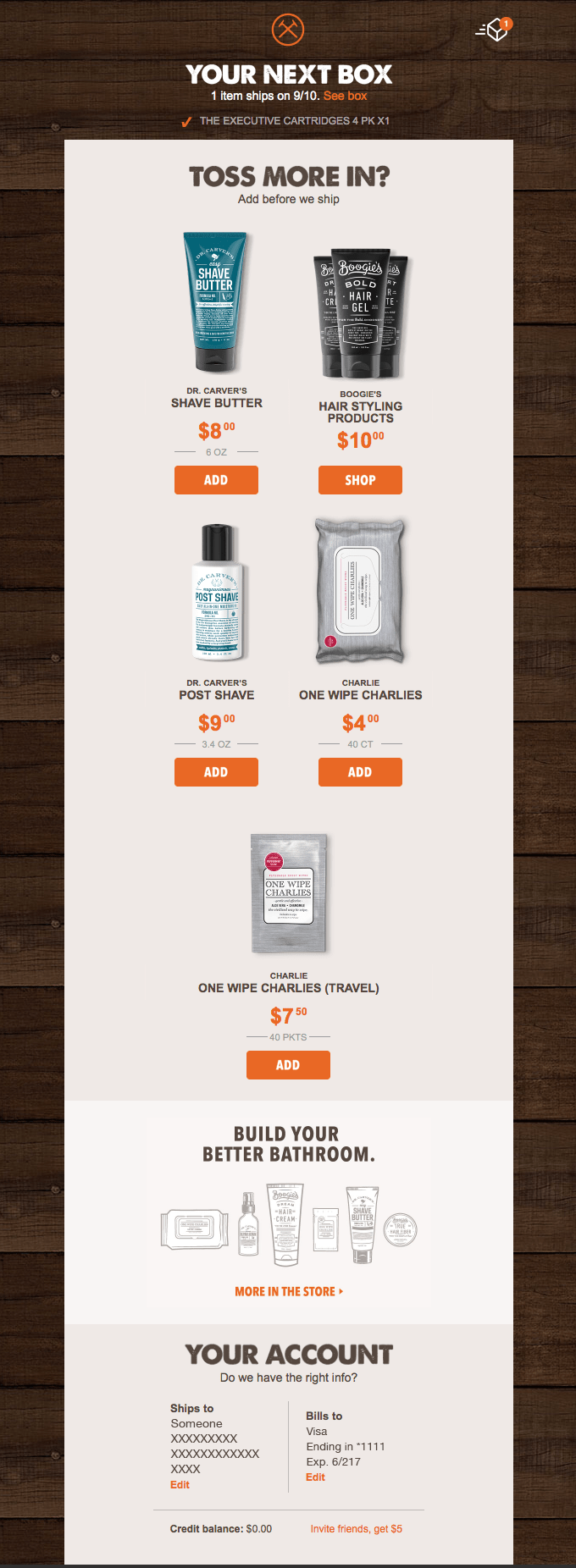 A cross-selling email from Dollar Shave Club; source: Really Good Emails
A cross-selling email from Dollar Shave Club; source: Really Good Emails
Summing it up
Email marketing is a great tool for boosting your sales conversion rate at any touchpoint with a subscriber or a customer; just keep the following tips in mind:
- Offer a lead magnet to first-visitors of your website.
- Make your subscribers feel like you care about them by sending out a welcome email series.
- Use triggered emails to remind users about a purchase, offer a discount or a little help in making a purchase.
- Segment your audience to send out relevant emails, cross-sell, and congratulate subscribers on their special dates to encourage future purchases.
It goes without saying that the power of email marketing is in automation, which saves a lot of time and resources and allows you to always get to the point.
SendPulse offers Automation 360 to help you set up any type of triggered emails. Besides, the service lets you include other communication channels like SMS, web push notifications, and Facebook chat bots. Sign up right now and start getting more sales tomorrow!